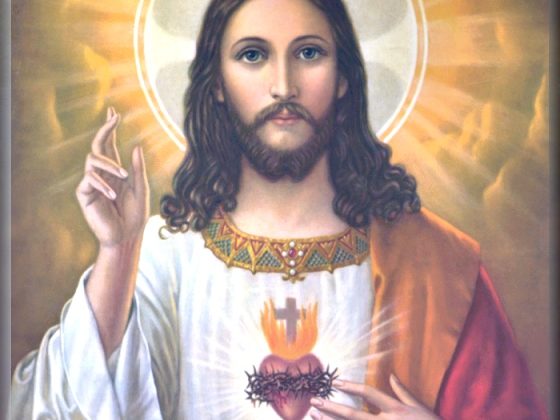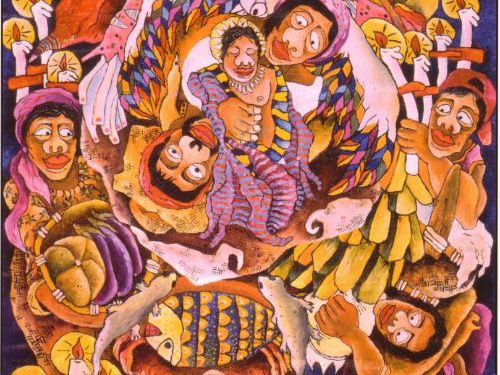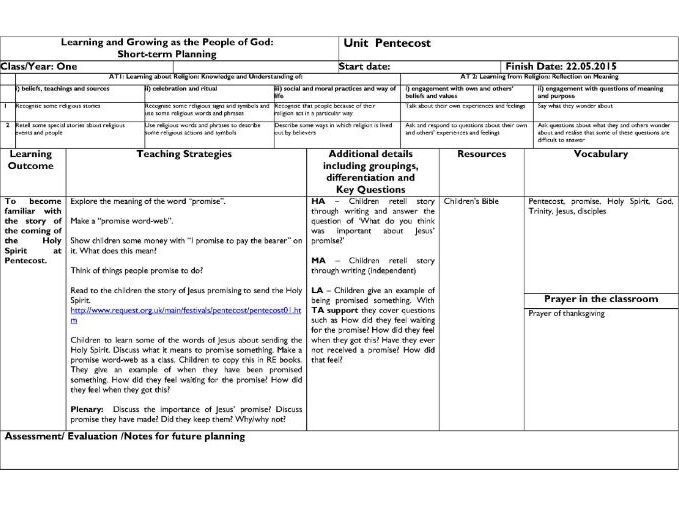357Uploads
98k+Views
28k+Downloads
Religious education
Sale

Years 1 to 4 Complete Year's Religious Studies R.E. Planning
For all years 1 to 4 complete planning all terms.
Easily adaptable up or down, so will save you hours.
Catholic in flavour but other religions included.
Contains powerpoints, planning, worksheets, info etc.
Why not look at the bundles. Incredible value and it’ll save your precious Sundays.
Ideal if you have been chosen to deliver R.E.
N.B. You will need to spend some time organising as I am retired. Also not a great deal of year 2 stuff. If you want superorganised stuff, please look at my RE powerpoint stuff,
sample planning :
Learning and growing as the People of God:
Short-term Planning Unit I – Easter
Most children will know that the four Gospels contain accounts of the Resurrection of Christ. They will be able to understand the transforming effect this had upon the disciples. The children will know that the Ascension reminds Christians of the promise of Christ to remain always with them.
Less able children will be able to recall parts of the Resurrection story from some of the Gospels.
More able children will have a greater understanding of the importance of the Resurrection for Christians today and of their belief in the presence of Christ in the Church and in their lives.
Start date: Finish Date
Additional details including groupings, differentiation Vocabulary and
Key Questions Resources Prayer
Revise with children previous learning about the Church’s celebration of Easter.
Recall that it is a season of fifty days and revise some of the colours and symbols of the season that are used in the Church’s liturgy.
Activity:
In groups - give children the colours and the symbols to match.
White Easter light
innocence
purity
joy
triumph
glory
Red Feasts of the Lord’s Passion, Blood and Cross the Passion
blood
fire
God’s Love
martyrdom
Palm Sunday
Purple Good Friday penance
humility
melancholy
Gold Easter joy
Children to read one of the four Gospel accounts of the Resurrection:
Matthew 28: 1-15, Mark 16: 1-17, Luke 24: 1-43, John 20: 1-21
Group Activity:
Must - Highlight the words and actions of the disciples and the women and the words and actions of Jesus.
Should/Could -Create a resurrection appearance table. Include in the headings: What the disciples were doing, what they saw, and what Jesus said and did.
(Use the above Gospel accounts to fill in the table).
Plenary:
Children to imagine that they are about to meet somebody who had never heard of Jesus before. What would they tell this person about the resurrection? What would be the most important information that they would need to pass on?
What were the words and actions of ____ at the resurrection of Christ?
Markers Remind the children that prayer time is an
important opportunity for us to recognise
the presence of Jesus in our lives.
Provide moments for silent prayer. Use
music and appropriate Easter focus,
Use the Resurrection and Ascension
stories during Collective Worship.
Other links/Homework

Free Freebie Good Samaritan Lesson Simple and Effective for Year 4 R.E. Literacy
Got me a job so must be reasonable!
A simple lesson plan, worksheet, powerpoint.
Great for discusiing with pupils.
I have plenty of maths, literacy, languages and Literacy stuff so have a look after downloading this freebie.

Christmas Powerpoint Free Freebie Lesson Taster Advent Religious Studies
A freebie.
A nice powerpoint on the religious aspect of Christmas.
I’m hoping to interest you in buying my series of Christmas lesson on R.E.
Sale

Year 4 Planning Spring Term Numeracy Literacy KS2
Important! If you’d like to buy the whole year’s planning (Autumn, Spring and Summer) you’d be better off buying my bundle.
Planning for the Spring term for year 4.
You get 160 mb of material so good value imo.
I taught mainly in Catholic schools so has a Catholic bent. But as we live in a multicultural society, this should be no problem.
You get planning for:
creative curriculum
Literacy
Numeracy
P.E. (some)
Science (some)
R.E. (Christmas, Lent etc)
Loads of great lessons to ease your Sunday afternoons. Just cut and paste into your school template.
Sale

Year 4 Summer term Planning Numeracy Literacy KS2
Important! If you’d like to buy the whole year’s planning (Autumn, Spring and Summer) you’d be better off buying my bundle.
Planning for the Summer term for year 4.
You get 114 mb of material so good value imo.
I taught mainly in Catholic schools so has a Catholic bent. But as we live in a multicultural society, this should be no problem.
You get planning for:
creative curriculum
Literacy (Stories that raise issues, Poetry etc)
Numeracy (Fractions and Decimals etc)
P.E. (some)
Science (some)
R.E. ( Easter, Pentecost etc)
Loads of great lessons to ease your Sunday afternoons. Just cut and paste into your school template.
Sale

RE Christmas lesson Three Powerpoint and Planning Catholic Flavour
Lesson Three in my series on Advent and Christmas.
Nice powerpoint and planning
Sale

RE Christmas lesson Four Powerpoint and Planning Catholic Flavour
Lesson four in my nice Christmas unit.
Please look at the others to get the idea.
Nice powerpoint ion this one.
Sale

Hannukah teaching Materials 5 Powerpoints 4 Word Documents Religion
Hannukah teaching Materials 5 Powerpoints 4 Word Documents
Nice visual topic.
Interesting.
Bundle Sale

Literacy Bundle Year 5 Road Dahl J K Rowling Persuasive Writing
Loads and loads of planning aimed at year 5 and year 6 Literacy work.
Save yourself hours of planning.
Lots of worksheets, powerpoints, planning etc.
Sale

Year 5 Complete Year's Religious Studies R.E. Planning
For all year 5 complete planning all terms.
Easily adaptable up or down, so will save you hours.
Catholic in flavour but other religions included.
Contains powerpoints, planning, worksheets, info etc.
Why not look at the bundles. Incredible value and it’ll save your precious Sundays.
Ideal if you have been chosen to deliver R.E.
Note : zip file contains loads more files than the list you see.
sample planning
Sale

Advent Lesson Religious Education Year 5
A great lesson for the season of advent.
sample planning :
Begin the lesson by sharing the learning objective with the children. Give each table two different coloured post it notes and ask the children to write what they already know about advent, on one coloured post it, and anything that they would like to know about advent on the other. Children to share ideas and keep post its. If the question is not answered in the lesson they should put it in their RE book to inform the next RE lesson’s teaching.
CT and children to discuss the liturgical seasons of the year. What are they? How many are there? What is the first season of the liturgical year? Do we use colour with the liturgical seasons?
Ask the children to work on netbooks to research the meaning of the word Advent. Can they find out which language the word originates from? What does it mean?
http://projectbritain.com/Advent.html
Bring the children back together and ask them to feedback their findings to create a class mindmap. Children to then draw and complete a mind map in their books illustrating what they already know about the liturgical season of Advent.
Explore the duel meaning of the season: to prepare for the birthday of Jesus and to prepare for Jesus to come again.
Set up prayer partners for the period of advent
Sale

Easter Lessons Through Literature Planning Powerpoints Worksheets Road To Emmaeus
Materials for teaching Easter and Jesus and his disciples.
Planning powerpoints etc.
Road to Emmaeus board game.
Sale

Ramadan Resources Islam Plus other useful bits of RE planning
Nice worksheet on Ramadam.
Plus other nice bits and bobs on Islam and other religions.
Sale

Advent powerpoint Simple Introduction Time Filler Creative Art
Simple powerpoint.
Real product has no references on it i.e. it’s clean
Bundle Sale

Year 3 and Year 4 Complete Year's Planning Numeracy Literacy KS2 plus Mathematics Aesop Cloze Test Worksheets
Mega bundle.
Please look at my shop for full details.
Complete year’s planning for Year 3 and Year 4 plus:
Telling the time worksheets
Times Tables worksheets
Aesop close test worksheets
All answer sheets provided for worksheets.
Great value. Please be patient when downloading.
Sale

Year 1 RE Religious Studies Catholic Short Term Lesson Plans Advent Christmas
Save your Sundays!]
Short term RE Catholic based lesson plans.
Cut and paste and adapt for your school and enjoy a rest on Sunday.
Short plans on:
Pentecost
Advent
Christmas
Creation
Easter
Family and celebrations
Holy Week
Lent
Multicultural
Pentecost
Prayer
Sharing in Jesus’ Life
Sale

Multi Faith week Islam Planning Powerpoints Worksheets Documents Ramadan
A great unit on Islam for primary school kids.
You get
14 pdf files
11 powerpoints
11 microsoft word documents
The planning is all there. The subjects include introduction to Islam, Mosques, Ramadan, pilgrims, the 5 pillars of Islam
example of text from worksheet :
Islamic Place of Worship
The ____________ is the place of worship for Muslim people. Most of these have a large dome above the main prayer hall. This is because the dome helps to
_________________________________________________________________________.
Outside the mosque, there is a _______________. This is a tower where the muezzin calls Muslims to prayer.
Inside the mosque there is a space to store shoes. This is because
__________________________________________________________________________.
There is also a place where the Muslims can wash. This is because
__________________________________________________________________________.
There are no seats in the main prayer hall because
_________________________________________________________________________ .
The ____________ on the wall show the times that Muslims must pray.
The ____________ wall is a wall which faces Mecca. In this wall, there is a _____________, which is a small cove pointing towards Mecca.
The minbar is a platform where the leader of the service (called the __________) gives his sermon.
This section may be blocked by a ________________. The mosque is also used as a place for
_______________________________________________________________________.
Islamic Place of Worship
The MOSQUE is the place of worship for Muslim people. Most of these have a large dome above the main prayer hall. This is because the dome helps to
ECHO THE PRAYERS AROUND THE MOSQUE.
Outside the mosque, there is a MINARET. This is a tower where the muezzin calls Muslims to prayer.
Inside the mosque there is a space to store shoes. This is because
MUSLIMS ARE NOT ALLOWED TO WEAR SHOES INSIDE THE MOSQUE.
There is also a place where the Muslims can wash. This is because
MUSLIMS ALWAYS WASH BEFORE PRAYING.
There are no seats in the main prayer hall because
MUSLIMS KNEEL ON MATS ON THE FLOOR DURING PRAYER.
The CLOCKS on the wall show the times that Muslims must pray.
The QIBLA wall is a wall which faces Mecca. In this wall, there is a MIHRAB, which is a small cove pointing towards Mecca.
The minbar is a platform where the leader of the service (called the IMAM) gives his sermon.
This section may be blocked by a SCREEN. The mosque is also used as a place for
TEACHING, MEETINGS AND QUIET MEDITATION.
Bundle Sale

Year 5 Mega bundle Maths English Science
A great bundle of work.
Loads of planning.
Please see the individual items in my shop for full details.
Sale

Divali Diwali Planning Worksheets Powerpoints Hindu Sikh World Religion
My planning and worksheets from various schools on Divali and associated themes.
Lots of ideas you can hone.
Colourful powerpoints you can show and add material to.
sample
To use skimming and scanning skills to read information texts and identify the main features in structure and language.
I can identify the features of an information text.
I can create subheadings for my information text.
I can choose relevant information for my note taking.
Starter:
Go over what skimming and scanning skills are with the class.
What is the difference between fiction and non-fiction texts? Think of as many features as you can.
Introduction:
Explain that by the end of the week we will be making some informative leaflets, however, we must first research what we would like to include within our leaflets.
What is an information text? What does it do?
Look at the leaflets on your tables.
Create a checklist as a table.
Introduction (what is the text about?)
Each paragraph is a main idea.
Sub headings
Questions to make the reader think
Use formal and impersonal language.
Talk about ‘people’ and ‘they’. Try not to use personal pronouns, such as I or me.
Stick to the facts
Some descriptive phrases
Conclusion to sum up.
Diagrams
Technical vocabulary
Text boxes
Present tense
Third person
This will be used later on to inform them of their own structure and design for their leaflet.
Move onto Diwali and researching the topic:
What do you already know about Diwali?
Let’s share our ideas.
What questions do we want to know the answers to?
Today, you are going to start your research for your information text on Diwali.
Think of a title
Think of your sub headings (nice to have a question)
Collect your notes (what skills will you be using? Skim, scan, note).
Collect diagrams (make notes as to where they are)
Chn to be given a grid to write their four question on that they will then research.
In your notes:
Get as much technical vocabulary as you can.
Get as much information as you can.
Main:
To collect notes for your information texts from iPads. Look at Kidrex.
Including videos
http://www.bbc.co.uk/schools/religion/hinduism/diwali_questions.shtml
http://resources.hwb.wales.gov.uk/VTC/ngfl/re/b-dag/ngfl-container/re-unit3-en.html
Sale

RE Christmas lesson One Powerpoint and Planning Catholic Flavour
I’m putting up a series of lesson for Christmas.
RE themed.
Catholic flavour.
You get a nice powerpoint.
Plus some planning and worksheets.
I’ll put up the others if there is demand.




















